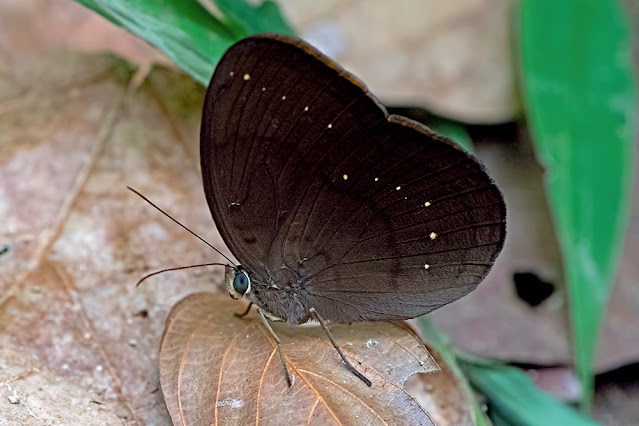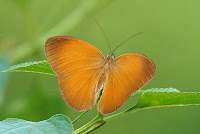<> Faunis canens (Hübner,[1826]) <>
the Common Faun ผีเสื้อป่าสีตาลไหม้
Click on any photo to see large version

Photo taken at Doi Suthep-Pui National Park, Chiang Mai, Thailand. 1150m a.s.l.

Widely distributed across most of the region. It can be locally common. There is little difference visually between the sexes although the female is slightly larger and has darker shading at the margins of the upperwings. Although basically a forest species, it is sometimes seen at forest edges and in sunny glades within the forest. It is a fairly weak flier and usually flies close to the ground and rests amongst the leaf litter. Multivoltine with several broods per annum.
Synonyms and previously used names: Papilio arcesilaus, Faunis taraki
Taxonomy: Animalia - Arthropoda - Insecta - Lepidoptera - Nymphalidae - Morphinae - Faunis - canens
Regional Distribution: India, Bhutan, Myanmar, Thailand, Laos, Cambodia, Vietnam, China, Taiwan, Malaysia, Singapore, Indonesia, Philippines
Habitat: dense montane forest up to 1700m a.s.l. Wingspan: 55-65mm
Flight time: all year depending on location
Life History: egg 8 days instar 1 5-6 days instar 2 4-5 days instar 3 4-5 days instar 4 6-10 days instar 5 8-10 days pupa 9-12 days Total egg to adult 44-55 days. All times approximate.
Larval Hosts: Caryota mitis, Cyrtostachys renda, Elaeis guineensis, Licuala grandis, Pholidocarpus kingianus, Pinanga scortechinii, Plectocomia elongata (Arecaceae), Curculigo latifolia (Hypoxidaceae), Peltophorum pterocarpum (Fabaceae), Musa sp. (Musaceae). Hosts used depends upon location and availability of plant species.
Adult Food Sources: Nectar - not known to feed on nectar. Other - mud puddling (occasional), rotting fruit
Links to other pages in this series for species in the same subfamily



%20gallery.jpg)

